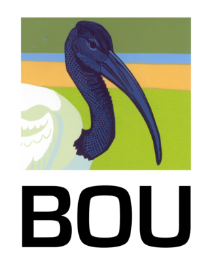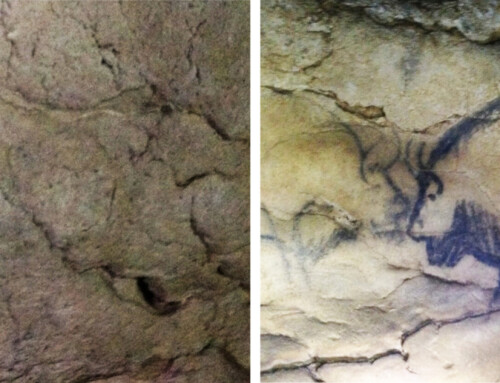Until the early years of the twentieth century brought the negative effects of habitat loss, pollution, and pesticides to bird populations, most local and global population declines—and extinctions—were the result of hunting for food and feathers. The Maoris ate the Moas to extinction; North American settlers ate the Passenger Pigeon and Eskimo Curlew; the British ate the Capercaillies to local extinction on the British Isles; and the countries bordering the North Atlantic ate the Great Auk. At one time, the populations of many species of waterfowl and land fowl were decimated by overhunting on all continents.
Somewhat counterintuitively, being tasty or attractive did not always spell a species’ doom. Atlantic Canaries (Serinus canaria)—once found only on the islands of Macaronesia off the northwest coast of Africa—were, and still are, prized as cage birds for their beautiful songs and plumage colours. After Europeans settled those islands, about 500 years ago, the canary could soon be found in cages and aviaries throughout Europe, and later the Americas. Today, there may be as many as 5 million adult domesticated canaries in Europe alone, about 30 times the size of the wild population. While most of those caged canaries would probably not survive in the wild, from a gene’s eye view the species has been wildly successful.
Precisely because they have been hunted for food and sport, many populations of wildfowl and landfowl have also flourished during the past century. Indeed, the latest State of the Birds report for North America (https://www.stateofthebirds.org/2025/) shows that the only species whose populations have increased over the past 50 years are the dabbling and diving ducks and various waterbirds. Wetland habitat preservation and restoration, funded largely by hunters through Ducks Unlimited and other agencies, as well sa the reintroductions of Wild Turkeys in eastern North America and Capercaillies in Scotland, have brought their populations back from decimation to prehistoric levels and more.

And again from the gene’s point of view, the Red Jungle Fowl and the Mallard have flourished under domestication, mainly as a source of food. It is now estimated that there are more than 30 billion chickens on farms worldwide, making it by far the most abundant bird. Chickens were domesticated from the Red Jungle Fowl in China about 8000 years ago. Although most domestic chickens look nothing like a Red Jungle Fowl, the Biological Species Concept would designate them as the same species because they can (and do ) freely interbreed.

Like the Red Jungle Fowl, the ancestral populations of the Mallard were large and widespread, and the wild species is not currently of conservation concern. Also like the jungle fowl, the Mallard was likely first domesticated in Southeast Asia, maybe 4000 years ago. And as for the chicken, domestication resulted in myriad breeds, largely for egg and meat production but, unlike the chicken, also for pest removal and the fertilization of rice crops, as guard animals, and as a source of down, feathers and preen oil. Today the population of domesticated breeds of the Mallard numbers about 1.5 billion, with 90% of those living in Asia. While the wild Mallard has a broad range across the globe, and is by far the most abundant wild duck, the domesticated Mallard probably outnumbers its wild relative 30-fold. From a gene’s point of view, Mallards and Red Jungle Fowl are the most common and successful birds.

Some of the domesticated breeds of the Mallard
But despite the health of wild Mallard populations, all is not well with the species’ genome. The male Mallard is a randy old bird who will mate with any available female duck, including those of other species. To date, hybrids have been recorded between Mallards and more than half of the other species of wild ducks (https://avianhybrids.wordpress.com/anseriformes/), as well as with domesticated breeds, potentially introgressing some foreign genes into the wild Mallard genome. Recent studies have also shown that hunting (Madsen & Fox 1995), domestication (Champagnon et al. 2023), and the raising of Mallards for release into the wild (Lavretsky et al. 2023, Halligan et al. 2025) all have resulted in selection on the wild Mallard’s genes.
It is perhaps rather ironic that the word ‘Mallard’ came from the Middle English word ‘malard’ a term that initially referred to the male of any wild duck. Of all the wild ducks in the world, the Mallard may be now be the least wild when comparing its genome to that of its recent ancestors only a few generations ago.
Further Reading
Champagnon, J., Elmberg, J., Guillemain, M., Lavretsky, P., Clark, R.G. & Söderquist, P. (2023). Silent domestication of wildlife in the Anthropocene: The mallard as a case study. Biological Conservation 288: 110354. VIEW
Halligan, S.L., Schummer, M.L., Fournier, A.M.V., Lavretsky, P., Davis, J.B., Downs, C.J. & Musni, V. (2025) Morphological differences between wild and game‐farm Mallards (Anas platyrhynchos) in North America. Ibis 167: 720–733. VIEW
Lavretsky, P., Mohl, J.E., Söderquist, P., Kraus, R.H.S., Schummer, M.L. & Brown, J.I. (2023) The meaning of wild: Genetic and adaptive consequences from large-scale releases of domestic mallards. Communications Biology 6. VIEW
Madsen, J. & Fox, A.D. (1995) Impacts of hunting disturbance on waterbirds – a review. Wildlife Biology 1: 193–207. VIEW
Image credits
Bird populations graph from State of the Birds 2025
Poultry breeds: from an 1868 poster, now in the public domain, dowloaded from Wikipedia
Mallards: from Lavretsky et al. 2023; Creative Commons Attribution 4.0 International License





